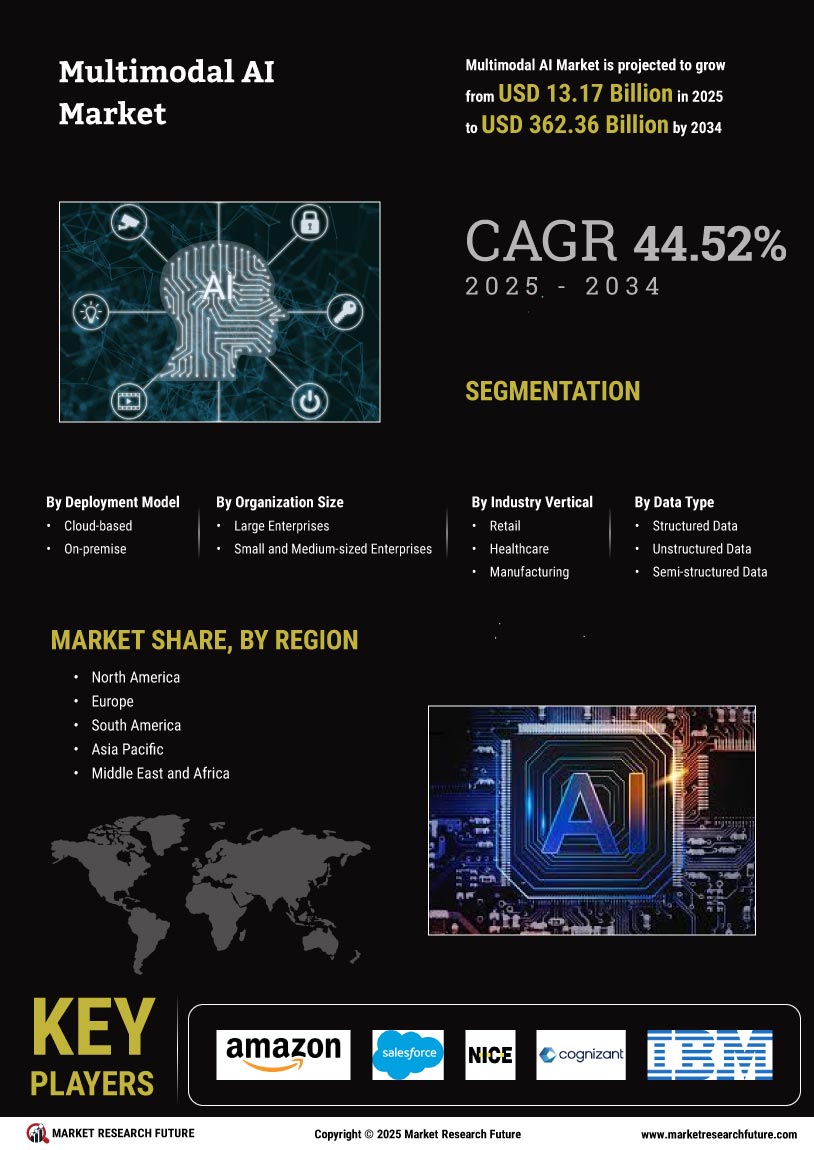Rising Demand for Automation
The Multimodal AI Market is experiencing a notable surge in demand for automation across various sectors. Industries such as manufacturing, healthcare, and finance are increasingly adopting multimodal AI solutions to enhance operational efficiency and reduce costs. According to recent data, the automation market is projected to grow at a compound annual growth rate of over 25% in the coming years. This trend indicates a strong inclination towards integrating multimodal AI technologies that can process and analyze data from multiple sources simultaneously. As organizations seek to streamline processes and improve decision-making, the adoption of multimodal AI is likely to become a cornerstone of their operational strategies.
Increased Investment in AI Startups
The Multimodal AI Market is witnessing a surge in investment directed towards AI startups specializing in multimodal technologies. Venture capital funding for AI startups has reached unprecedented levels, with investments exceeding 20 billion in the past year alone. This influx of capital is fostering innovation and accelerating the development of multimodal AI applications across various sectors. Investors are particularly interested in startups that demonstrate the potential to integrate multiple data modalities effectively, as this capability is seen as a key driver of future growth. As these startups continue to emerge and evolve, they are likely to contribute significantly to the expansion of the multimodal AI market.
Regulatory Support for AI Development
The Multimodal AI Market is benefiting from increasing regulatory support aimed at fostering AI development. Governments are recognizing the potential of AI technologies to drive economic growth and innovation. Recent policy initiatives have been introduced to create a conducive environment for AI research and deployment, including funding for AI projects and the establishment of regulatory frameworks. This supportive landscape is encouraging businesses to invest in multimodal AI solutions, as they can operate with greater confidence in compliance and ethical standards. As regulatory bodies continue to refine their approaches, the multimodal AI market is expected to flourish, attracting more players and investments.
Advancements in Machine Learning Algorithms
The Multimodal AI Market is significantly influenced by advancements in machine learning algorithms. These innovations enable systems to learn from diverse data types, including text, images, and audio, thereby enhancing their analytical capabilities. Recent developments in deep learning and neural networks have led to more sophisticated models that can interpret complex data relationships. This evolution is reflected in the increasing investment in AI research and development, which reached approximately 50 billion in the last fiscal year. As these algorithms continue to evolve, they are expected to drive the growth of the multimodal AI market, allowing for more accurate predictions and insights across various applications.
Growing Need for Enhanced Customer Experiences
In the Multimodal AI Market, there is a growing emphasis on enhancing customer experiences through personalized interactions. Businesses are leveraging multimodal AI to analyze customer data from various channels, including social media, chatbots, and customer service interactions. This approach allows companies to tailor their offerings and improve customer satisfaction. Recent studies indicate that organizations utilizing multimodal AI for customer engagement have seen a 30% increase in customer retention rates. As competition intensifies, the ability to provide seamless and personalized experiences is becoming a critical differentiator, further propelling the adoption of multimodal AI solutions.

















Leave a Comment